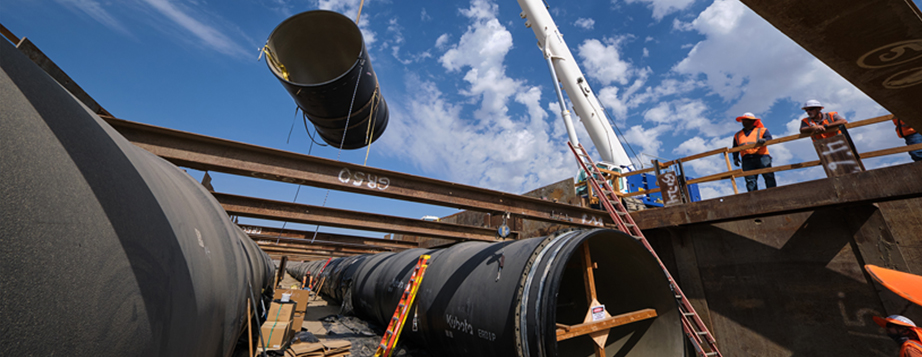There are many differences between Ductile Iron Pipes and ordinary cast Iron Pipes in terms of material, performance, production process, appearance, application scenarios and price, as follows:
Material
Ductile iron pipe: The main component is ductile iron. On the basis of ordinary cast iron, spheroidizer and inoculant are added to change the graphite in cast iron from flake to spherical.
Ordinary cast iron pipe: The material is ordinary cast iron, and its graphite is distributed in flakes.
Performance
Strength and toughness: The tensile strength and toughness of ductile iron pipes are much higher than those of ordinary cast iron pipes. The tensile strength of ductile iron pipes can generally reach 400-900MPa, while the tensile strength of ordinary cast iron pipes is usually 150-300MPa. Ductile iron pipes have good impact resistance, are not easy to break, and can withstand large external forces and deformations.
Corrosion resistance: Both have a certain degree of corrosion resistance, but ductile iron pipes are more resistant to corrosion because of their denser structure and usually undergo more complete anti-corrosion treatment, such as zinc coating on the inner and outer walls, asphalt paint, etc.
Sealing: Ductile Iron Tube use flexible interfaces, such as rubber ring seals, which can adapt to a certain degree of pipe deformation and displacement, have better sealing, and can effectively prevent water and air leakage. Ordinary cast iron pipe interfaces are relatively rigid and have poor sealing.
Production process
Ductile iron pipes: By adding spheroidizers and inoculants to molten iron, and then forming by centrifugal casting. This process makes the structure of the cast pipe more dense and uniform, and the quality is stable.
Ordinary cast iron pipes: Generally, sand casting or continuous casting processes are used, and the production process is relatively simple, but the quality and performance uniformity of its castings are not as good as ductile iron pipes.
Appearance
Ductile iron pipes: The surface is relatively smooth, the wall thickness is uniform, and the roundness of the pipe body is good.
Ordinary cast iron pipe: The surface is relatively rough, and there may be some defects such as sand holes and pores, and the thickness of the pipe wall may not be uniform.
Application scenarios
Ductile iron pipe: It is widely used in urban water supply, drainage, gas transmission, industrial pipeline systems and other fields with high requirements for pipeline performance. Ductile iron pipe is the preferred pipe material in long-distance water transmission, high-pressure water transmission and occasions with high water quality requirements.
Ordinary cast iron pipe: Due to its relatively low performance, it is mainly used in some occasions where pipeline requirements are not high, such as building drainage, pressureless irrigation and other systems.
Price
Ductile iron pipe: Due to the complex production process and high requirements for raw materials and production equipment, the price is relatively expensive compared to ordinary cast iron pipe. However, its comprehensive cost has advantages in long-term use due to its long life and low maintenance cost.
Ordinary cast iron pipe: The price is relatively cheap and suitable for some projects with limited budgets and no stringent requirements on pipeline performance.

In summary, ductile iron pipes and ordinary cast iron pipes show obvious differences in many key dimensions. Ductile iron pipes play a key role in many important fields with strict requirements on pipeline quality and stability due to their superior material properties, outstanding performance and advanced production technology. Although ordinary cast iron pipes are slightly inferior in performance, they also occupy a place in specific infrastructure engineering scenarios due to their affordable prices. In actual engineering construction and pipeline laying projects, fully understanding the difference between the two and carefully selecting suitable pipes based on specific use environments, performance requirements and budget constraints are the key to ensuring the smooth progress of the project, long-term stable operation and maximizing economic benefits.
Address
Bl20, Shanghecheng, Shuangjie Street, Beichen District, Tianjin, China
Phone
+86 15320016353
Post time: Apr-17-2025

